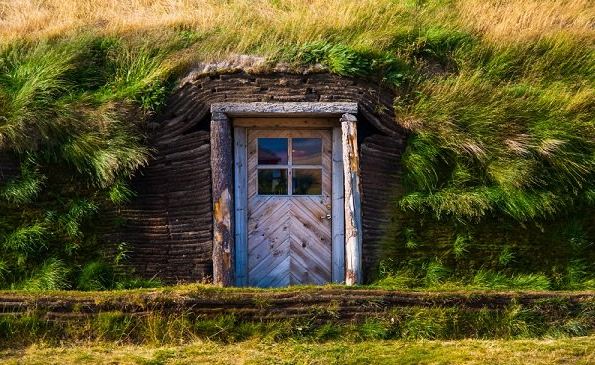We’ll get to the roof in a minute but, first of all, let’s talk about the structure and interior of an earth home. From the sounds of things this type of home could keep you safe from the elements when SHTF and keep you well hidden from potential threats. You might be surprised by what the experts have to say:
Structure
When searching for a DIY home project, the best approach is to start with what you already have. In the case of earth homes, that means dirt. Some of the greatest structures in the world have been built with nothing more than soil. For instance, many parts of The Great Wall of China are laid on a foundation of “loess,” or clay rich soil, and these structures are no different.
For a traditional “cob” style structure, the soil is typically mixed with clay, straw, and sand, and then it is molded into loaf-shaped clumps or bricks to be used for the building process. For a turf house meant to be built within a hill (like a hobbit house,) many of the same principles apply, but most carpenters would first build the shell of the home out of refurbished timber before adding their soil-based mixture.Interior
For the inside of an earth home, eco-engineers have devised many clever ways to mimic modern styling while keeping with a planet-friendly theme. For instance, the inner walls must be able to take in and release water, which makes traditional plasters unusable for these projects. Instead, many builders use a lime-based plaster paste, which is available at most home improvement stores, in order to create a contemporary look.
Although natural wood is the standard flooring style in earth homes, many homeowners choose to embrace natural dirt floors to complete the simplistic look. Using oils such as linseed, pine, and cashew resins, you can produce a sealant that forms a barrier between your feet and the dirt below while keeping the natural aesthetic.
Another of the most interesting things about an earth home is its “living roof,” with grass, plants and even blooms on it. It’s an easy install but does require some planning and the garden aspect increases insulation efficiency, reduces noise and a number of other thought-provoking aspects – including allowing the home to blend in with its surroundings. As survivalists, we know how important that can be from a safety viewpoint.
To learn more, including internal temperatures, protection against the elements, and repairs information go to News Prepper.
If you consider yourself a DIYer this is the project for you!
Featured Image via News Prepper

Erin Hayes
SO INSPIRATION